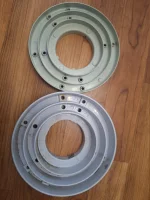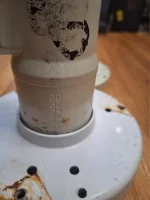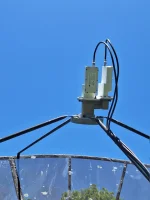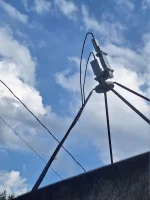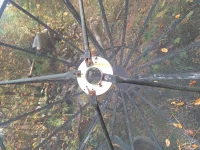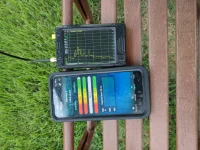WilburSmith
New member
Hey everyone,
IÂ’ve been working tirelessly on setting up my C-Band satellite antenna, and I wanted to share the details of my setup and the challenges IÂ’m facing.
Current Setup:
Installation: My satellite antennaÂ’s mounting pole is perfectly plumb, securely mounted into concrete. The dish is securely fastened to this pole.
Adjustments:
From Dish Pointer, I got my latitude: 41.6120°, which equals an elevation angle of 41.65° and a declination angle of 5.74°.
I used two inclinometers (plastic and digital) to ensure my elevation angle is set correctly to 41.65°.
LNBF:
Purchased new, a SatMaximum 5G filter C band LNBF.
Input: 3.7-4.2GHz
Output: 950-1450 MHz
L.O.: 5150 MHz
In my set-top box, I set the LNB frequency to 5150 (not 5150/5750).
Transponders I Tried:
91 West: Word Network (Frequency: 4067 Horizontal, Polarization: 6620)
101 West: Daystar (Frequency: 4005 Vertical, Polarization: 4444)
97 West: WGN Sports (Frequency: 3731 Horizontal, Polarization: 12800)
Challenges:
Despite ensuring all settings (elevation, declination) are accurate, I haven't received any frequency or response from a satellite. I tried adjusting the declination values above and below the designated range, but still no signal.
One potential issue could be the skew adjustment on the LNBF. It has a range of 30 to 0 to 30, with 0 in the middle. The values 34, 36, 38, 40, 42 are engraved on the side of the LNBF, and IÂ’m unsure how to set the skew correctly. The distance from the center of my dish to the screws is about 36 inches, which might also play a role.
Additional Info:
Source of Latitude and Declination Info: TVROSat Forum
Unfortunately, I canÂ’t provide pictures as my camera is broken. If anyone has insights or advice on what might be going wrong, especially regarding the skew setting, IÂ’d greatly appreciate your help!
Thanks in advance!
IÂ’ve been working tirelessly on setting up my C-Band satellite antenna, and I wanted to share the details of my setup and the challenges IÂ’m facing.
Current Setup:
Installation: My satellite antennaÂ’s mounting pole is perfectly plumb, securely mounted into concrete. The dish is securely fastened to this pole.
Adjustments:
From Dish Pointer, I got my latitude: 41.6120°, which equals an elevation angle of 41.65° and a declination angle of 5.74°.
I used two inclinometers (plastic and digital) to ensure my elevation angle is set correctly to 41.65°.
LNBF:
Purchased new, a SatMaximum 5G filter C band LNBF.
Input: 3.7-4.2GHz
Output: 950-1450 MHz
L.O.: 5150 MHz
In my set-top box, I set the LNB frequency to 5150 (not 5150/5750).
Transponders I Tried:
91 West: Word Network (Frequency: 4067 Horizontal, Polarization: 6620)
101 West: Daystar (Frequency: 4005 Vertical, Polarization: 4444)
97 West: WGN Sports (Frequency: 3731 Horizontal, Polarization: 12800)
Challenges:
Despite ensuring all settings (elevation, declination) are accurate, I haven't received any frequency or response from a satellite. I tried adjusting the declination values above and below the designated range, but still no signal.
One potential issue could be the skew adjustment on the LNBF. It has a range of 30 to 0 to 30, with 0 in the middle. The values 34, 36, 38, 40, 42 are engraved on the side of the LNBF, and IÂ’m unsure how to set the skew correctly. The distance from the center of my dish to the screws is about 36 inches, which might also play a role.
Additional Info:
Source of Latitude and Declination Info: TVROSat Forum
Unfortunately, I canÂ’t provide pictures as my camera is broken. If anyone has insights or advice on what might be going wrong, especially regarding the skew setting, IÂ’d greatly appreciate your help!
Thanks in advance!

